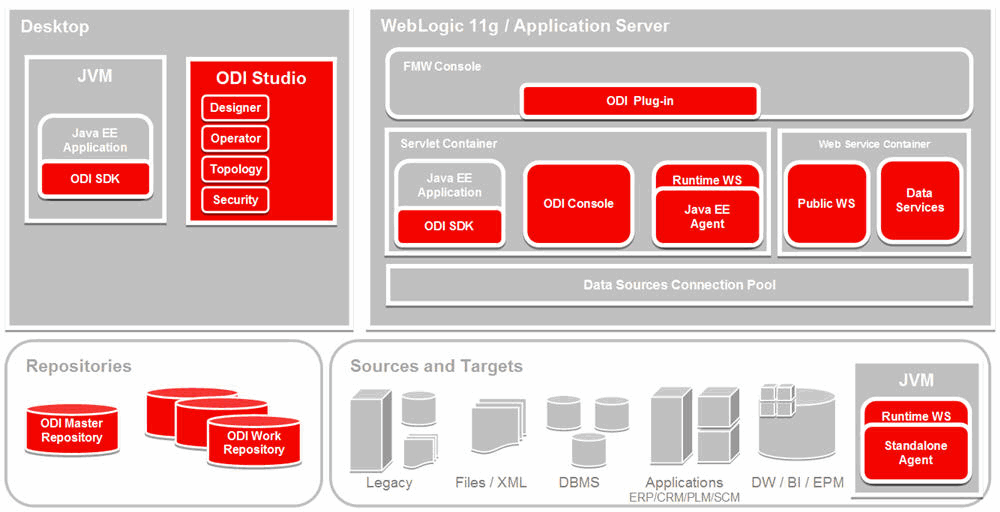ODI (Oracle Data Integrator) Designer is a graphical tool used for designing and developing data integration solutions. It provides a user-friendly interface that allows you to create, edit, and manage various components of your data integration projects. Here’s an overview of the ODI Designer interface and its key navigation features:
- Top Menu Bar: The top menu bar contains several menus such as File, Edit, View, Tools, and Help. These menus provide access to various commands and options for managing your projects and working with ODI Designer.
- Toolbar: The toolbar is located below the top menu bar and provides quick access to frequently used commands and actions. It includes buttons for tasks like creating new objects, saving changes, validating designs, and executing scenarios.
- Designer Navigator: The Designer Navigator is located on the left side of the interface and serves as a hierarchical tree structure that displays all the components of your project. It allows you to navigate through the project’s folders, models, interfaces, procedures, and other objects.
- Work Area: The work area is the central part of the interface where you design and configure various objects. It displays the details of the currently selected object, such as mappings, transformations, or procedures. You can edit and configure these objects using the properties panel located on the right side of the work area.
- Component Palette: The component palette is located on the right side of the interface and provides a set of tools and components that you can use to build your data integration processes. It includes various types of transformation operators, data sources, targets, and other objects that can be dragged and dropped into the work area.
- Project Browser: The project browser is a tabbed area located at the bottom of the interface. It displays additional details and properties of the selected object, such as its dependencies, source and target tables, or execution statistics. You can switch between different tabs within the project browser to access specific information about the object.
- Contextual Menus: ODI Designer also employs contextual menus that appear when you right-click on various objects or areas within the interface. These menus provide context-specific options and commands for managing objects, configuring properties, or performing actions related to the selected item.
- Keyboard Shortcuts: ODI Designer supports various keyboard shortcuts to perform common tasks quickly. You can refer to the documentation or the Help menu for a list of available keyboard shortcuts and their functions.
By familiarizing yourself with these elements of the ODI Designer interface and utilizing the navigation features, you can efficiently design and develop your data integration projects.
SHARE
